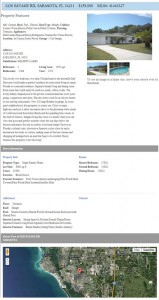Case Study: MLS RETS Integration
Sarasota real estate agent Tom Waters’ requirements were to create a website that would inform visitors about his background and services offered. In addition, a way to search area MLS listings would be needed. For CMS, we used WordPress, because we find it to be a very flexible, easy-to-use framework. We also created and customized a simple theme (CSS/PHP).
The MLS (Multiple Listing Service) section was more complicated. To make it functional, different sections had to come together:
- Access to MLS data (available through Mr. Waters/Coldwell Banker).
- Retrieval of data (through cron jobs on the Linux platform plus special scripting to update the SQL DB)
- Scripts to allow users to search for homes using certain parameters (# beds, # baths, housing type, location, zip code, price, etc.)
- Display of desired listings in an acceptable way
- A way for interested buyers to contact Mr. Waters if they found something they liked
In the end, it was an interesting learning experience in dealing with database organization, RETS (real estate transaction standards), form processing, CSS, and a little AJAX (for some administrative tasks).



RETS
Real Estate Transaction Standard (RETS) is an attempt to rectify the problem of MLS’s not having a common standard. RETS is a way for MLS systems to share a common language. This makes it easier on everybody – especially developers who have to write (and rewrite) custom code every time there’s a different MLS being accessed.
With the help of PHRETS (a PHP library for RETS), records are accessed, parsed, and then used to update a local database (MySQL). A WordPress template is then created to retrieve and display the local data. The user can then choose to filter that data using certain search terms.
You can see the website at sarasota-bradenton-real-estate.com
